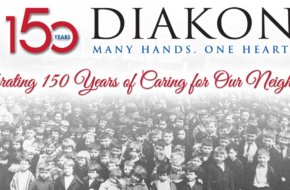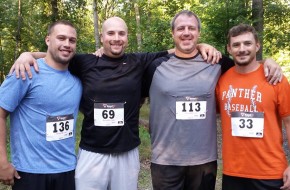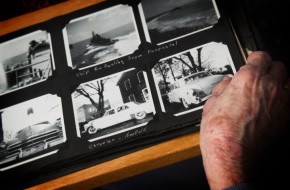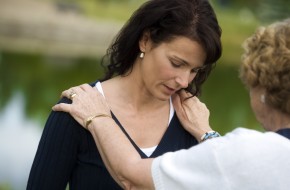Colorado. The word conjures images of the majestic Rocky Mountains and herds of Elk roaming freely … thoughts of relaxing in the outdoors … and feelings of awe that we have been blessed by God with such beauty.
Peaceful, isn’t it? In September 2013, however, the region of Weld, Larimer and Boulder counties was anything but peaceful. Heavy rains prompted flash-floods across some 2,000 square miles, destroying or damaging more than 7,000 houses. Miles of roadways were gone.
This spring—thanks in part to Diakon’s Love of Thy Neighbor Fund—I made my eighth trip as a volunteer with Brethren Disaster Ministries—this time traveling to the Loveland and Estes Park areas of Colorado to assist in recovery efforts.
The work is often tiring, reminding me of muscles I didn’t even recall having. My job with Diakon Family Life Services’ Specialized In-Home Treatment Program involves driving, sitting and talking with people, not hammering, dry-wall sanding and painting. Yet both jobs are enormously satisfying as you make a tangible difference in someone’s life—just in different ways.
I enjoyed the time spent working on the homes and learning skills new to me—on-site project leaders instruct volunteers in such tasks as mold-remediation, wall-framing, roofing, plumbing and even cabinet installation. Often, I worked side-by-side with the home owners and listened to their life stories.
The residents told stories of being stranded for days and wondering when or if they were going to be rescued. Of course, with flash-floods there is no warning, no time to prepare, and little chance to gather any possessions or photographs you may hold dear. In fact, I heard stories of people who had to be airlifted from their mountain homes or climbing into trees that towered over their homes because a roof just wasn’t high enough.
A particularly rewarding experience came as we helped a man who consistently had redirected volunteers to his neighbors’ homes “because,” he always said, “they need your help more than I do right now.” Yet he was nearing the end of his approval period for funding, his home still in need of significant repairs. So, in May, my fellow volunteers and I spent time painting ceilings, breathing in more drywall dust than I ever thought possible, finishing interior edges around recently re-installed windows and gutting a bathroom that was breeding mold inside its walls.
By the end of the week there were plans in place for kitchen cabinets to be installed and the homeowners were able to move out of the temporary housing they’d been in since 2013 and into the functioning portion of their home.
We did have time when not working to enjoy some of Colorado’s scenery. I enjoyed a few hours of hiking, as well as falling down a snow-packed hill in Rocky Mountain National Park, walking around a nearby lake and learning some new card games.
Mostly, however, we worked to aid those whose lives had been turned upside down by the flooding. With support from Diakon’s Love of Thy Neighbor Fund, I hope to take more such trips, possibly even another one this year.
—Erin Bell
Case Manager
Diakon Family Life Services Specialized In-Home Program (SPIN)
Because we review comments, they do not appear immediately. Please do not submit each comment more than once. Please review our comment policy.














